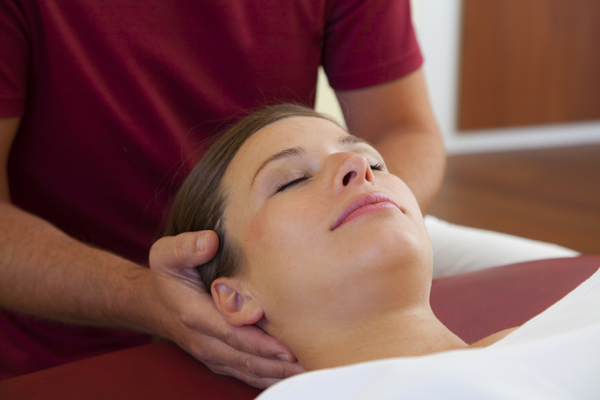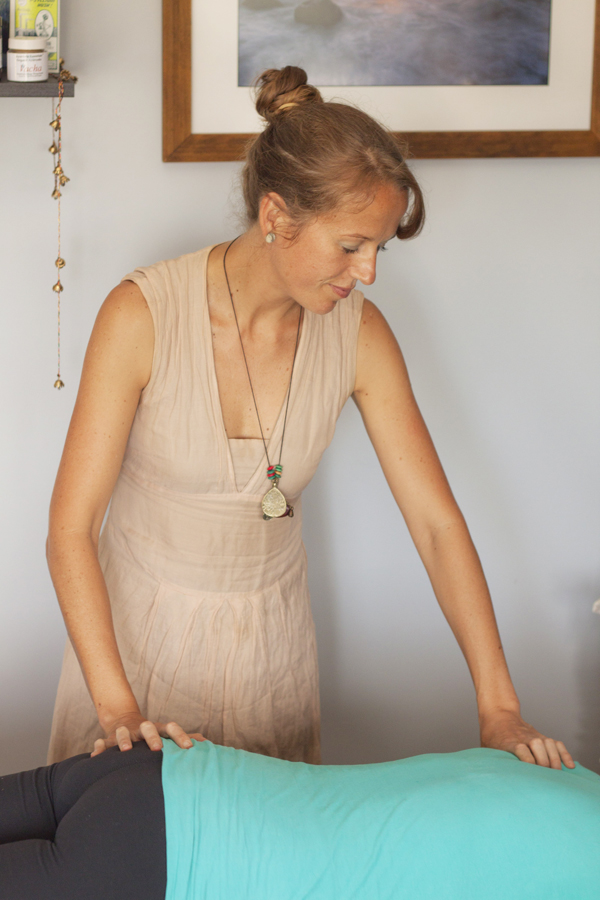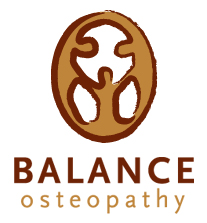As Osteopaths, we are skilled generalists and we treat and manage a broad range of health issues and pain complaints. Most people know Osteopaths as ‘back and neck doctors’. And indeed we successfully treat back and neck pain as part of everyday practice. However our Scope of practice is much broader and extensive than that.
Often when we meet people and they ask us what we do, they say “Osteopaths! That’s bones right?! But what do you actually do?”
What we do is help your body function in the best and most optimal way that it can. We use our very experienced and finely tuned palpation skills to determine what areas are restricted in the body and that need some help to release; we determine where the body is out of balance and how we may help the body’s own self -healing mechanisms to achieve health and pain relief for you, the patient.
At Balance Osteopathy, our patients enjoy our timely and dedicated approach to patient care. Our patients value not being rushed and having a generous amount of time and attention to help resolve their health challenges. Our patients enjoy a more gentle, focused and individualised approach to their pain and injuries. Our patients are satisfied by an assessment and treatment approach that is specific for them and that we alter according to their response. Patients enjoy a thorough and rigorous evaluation and individualised advice.
We determine where the body is out of balance and how we may help the body’s own self -healing mechanisms to achieve health and pain relief.
Relaxation and Balance
The philosophy and approach of osteopathy is to work with the body, guiding it toward wellbeing, rather than using force. Most people therefore find this treatment to be particularly comfortable and relaxing as well as very gentle. It’s not uncommon for patients to fall asleep during treatment, and a general feeling of ease and relaxation is often noted after a treatment.
Because Osteopathic treatment is usually relaxing, we assume this is mediated by the autonomic nervous system. Many health issues are caused or worsened by the stressors and demands of life on a physical, mental and emotional level. Stress can affect the physical body in various ways such as muscle tension and pain. During an Osteopathic treatment, as restrictions are gradually eased, there is often a return to a more relaxed state. People often notice after a treatment that they sleep more deeply and have an improved sense of wellbeing.
As Osteopaths diagnose and treat imbalances or restrictions in the body even before they cause symptoms, many people choose to have a regular maintenance treatment to prevent problems developing, much like you would service your car to keep it running smoothly!
What we treat…


Your initial consult will be approximately 1 hour. Your Osteopath will take a detailed medical history that provides them with useful information regarding your general wellbeing and assists them in making a diagnosis. The Osteopath will want to know about all symptoms, as well as details of any past accidents or traumas. Questions will be asked about lifestyle, diet and emotional wellbeing. Patients are required to sign a consent form once they have had the opportunity to ask any questions. The patient may be asked to perform some simple movements so the Osteopath can observe how the body is being used, to identify any mobility impairment and to evaluate posture. Neurological and orthopedic tests will be used where necessary to help with the assessment of the client’s complaint.
Following this, your Osteopath will perform diagnostic tests, as required. This may involve taking your blood pressure, checking your reflexes or examining a child’s ears. The Osteopath will then perform an Osteopathic exam (observation and assessing with their hands), to determine the areas of the body that are not functioning well.
An Osteopath’s highly developed sense of touch is one of their most important tools for understanding and diagnosing the presenting condition. By the end of the initial consultation, the Osteopath will be able to offer a diagnosis and discuss a treatment program. If the diagnosis is one that requires further investigation or specialist intervention, an Osteopath will suggest a referral to an appropriate practitioner. Osteopaths often treat in conjunction with a GP, dentist, podiatrist or other health care professional. Further tests may be needed so your Osteopath can refer you to a relevant practitioner or for x-rays and further imaging.
Please bring any scans, x-rays and results you already have.
No. Osteopaths are primary healthcare practitioners so you can call us directly and schedule an appointment. If you suffer from a complex or chronic health condition, your GP can refer you for treatment through Medicare. This is called a CDM (EPC) referral. Similarly if you have a work cover claim, you will need to be referred by your doctor for treatment through this scheme. We have HICAPS on site and can process all private health claims on the spot.
Each patient’s needs are different. Some people require only 1 or 2 treatments and others more. As Osteopaths aim to treat as close to the cause of a problem as possible, many conditions only require 2-6 treatments.
If, for example, a joint restriction is found to be contributing to a problem, the joint will be freed, but attention will also be given to the cause of this restriction so that the joint does not require repeated adjustments over many weeks or months. This is one of the advantages of an Osteopath’s ability to treat the skeletal joints along with the surrounding muscles and fascia.
All treatment programs are very specific for the individual and depend on the patient’s current condition, past history, and other factors, and more complex conditions sometimes require a longer course of treatment. Generally the more complex and more chronic a problem the more treatments will be required. An Osteopath’s aim is always to bring the body to a state of optimum functioning as soon as possible, and to enable this the osteopath may suggest ergonomic changes, exercise or lifestyle adjustments that will help stabilise and improve wellbeing.
Most people find osteopathic treatment comfortable and relaxing, with people often falling asleep during treatment. People feel a greater sense of wellbeing after treatment as the nervous system is returned to a more balanced state. Acute symptoms may take a day or two to settle and sometimes people will feel soreness and tiredness during this time. It is not advisable to engage in heavy physical activity in the 24 hours after your treatment.
Cranial Osteopathy is a very subtle form of treatment yet it can be powerful in its effect. OCF has been used by Osteopaths since the 1930’s and has continually been refined and intensively studied since. This is a type of Osteopathic treatment that very gently assists the body toward a state of balance to improve health and relieve pain. The practitioner uses very minimal force to free restricted areas in the body.
Exceptionally gentle contact and movements are used to correct dysfunctions that exist. Whether they are a joint restriction, tight muscles or a more generalised problem. Practitioners at Balance Osteopathy have extensive post graduate training in this field.
It takes 5 years of university training to become an Osteopath and we complete regular Professional Development and consider current and emerging research and evidence in our clinic.
In addition to academic training of anatomy, physiology, biochemistry, embryology and pathology, practical hands-on training is a very significant part of this training, so Osteopaths are therefore familiar with a very wide range of diagnostic approaches, and a wide range of manual procedures and techniques. Many soft tissue techniques including massage, stretching, muscle energy technique, myofascial release, and articulation or mobilisation procedures are a part of the osteopathic repertoire. A range of manipulative adjustments are also learnt, as are very subtle techniques that ease strain out of the tissues of the body. Most Osteopathic training programs also include training in osteopathy in the cranial field which is an exceptionally gentle way of diagnosing and working with the subtle movements within the body.
Due to the comprehensive range of manual treatment approaches learnt by an Osteopath, they are in a good position to be able to choose the treatment approach that is going to best suit a particular individual. Some people’s condition and body type responds optimally to a stronger treatment, and some respond best to a very subtle and gentle emphasis. This wide repertoire of treatment options is one of the main advantages of Osteopathy.
Osteopaths are mostly known for treating back pain, headaches, and sporting or overuse injuries. However, Osteopaths are not limited to helping aching joints. Over the years, practitioners at Balance Osteopathy have participated in co-managing patients suffering from a range of medical problems with positive clinical results.
Osteopathy is a government-registered profession which specialises in natural and patient-centred health care that focuses on treatment of the physical structure and function of the body. Well known for its precise, gentle treatment of muscular and joint conditions such as back and neck pain, osteopathy may also have a significant effect on circulation, lymphatic drainage and the nervous system, and hence on a variety of conditions.
Osteopaths view the person as whole, and use hands-on treatment to aid the person’s function and help a person return to a state of balance. Osteopathy helps the body to express health, so that it may utilise its own self-healing mechanisms to combat disease. Osteopathy does not focus solely on alleviating symptoms, but seeks to find and treat the cause.
Osteopathy was founded in 1874 by Dr A.T. Still in the United States. Through his experiences as a medical doctor, Dr Still created a system of health care that recognises the relationship of all the different systems in the body.
